#Chandra X-ray Observatory
Text
Scientists have discovered the oldest black hole yet, a cosmic beast formed a mere 470 million years after the Big Bang.
The findings, published Monday, confirm what until now were theories that supermassive black holes existed at the dawn of the universe. NASA's James Webb Space Telescope and Chandra X-Ray Observatory teamed up over the past year to make the observations.
Given the universe is 13.7 billion years old, that puts the age of this black hole at 13.2 billion years.
Even more astounding to scientists, this black hole is a whopper—10 times bigger than the black hole in our own Milky Way.
Continue Reading.
175 notes
·
View notes
Text

"This new image of NGC 2264, also known as the 'Christmas Tree Cluster,' shows the shape of a cosmic tree with the glow of stellar lights. NGC 2264 is, in fact, a cluster of young stars — with ages between about one and five million years old — in our Milky Way about 2,500 light-years away from Earth. The stars in NGC 2264 are both smaller and larger than the Sun, ranging from some with less than a tenth the mass of the Sun to others containing about seven solar masses.
This new composite image enhances the resemblance to a Christmas tree through choices of color and rotation. The blue and white lights (which blink in the animated version of this image) are young stars that give off X-rays detected by NASA’s Chandra X-ray Observatory. Optical data from the National Science Foundation’s WIYN 0.9-meter telescope on Kitt Peak shows gas in the nebula in green, corresponding to the 'pine needles' of the tree, and infrared data from the Two Micron All Sky Survey shows foreground and background stars in white. This image has been rotated clockwise by about 160 degrees from the astronomer’s standard of North pointing upward, so that it appears like the top of the tree is toward the top of the image.

Young stars, like those in NGC 2264, are volatile and undergo strong flares in X-rays and other types of variations seen in different types of light. The coordinated, blinking variations shown in this animation, however, are artificial, to emphasize the locations of the stars seen in X-rays and highlight the similarity of this object to a Christmas tree. In reality the variations of the stars are not synchronized.
The variations observed by Chandra and other telescopes are caused by several different processes. Some of these are related to activity involving magnetic fields, including flares like those undergone by the Sun — but much more powerful — and hot spots and dark regions on the surfaces of the stars that go in and out of view as the stars rotate. There can also be changes in the thickness of gas obscuring the stars, and changes in the amount of material still falling onto the stars from disks of surrounding gas.
NASA’s Marshall Space Flight Center manages the Chandra program. The Smithsonian Astrophysical Observatory’s Chandra X-ray Center controls science operations from Cambridge, Massachusetts, and flight operations from Burlington, Massachusetts."
Date: December 19, 2023
NASA ID: link
#NGC 2264#Christmas Tree Cluster#Space#Galaxy#NASA#December#2023#gif#Chandra X-ray Observatory#X-ray Observatory#Chandra#Marshall Space Flight Center#MSFC#Huntsville#Alabama#my post
60 notes
·
View notes
Text



24 December 2023
💚🎄💚
#NASA#Christmas Tree Cluster#Christmas Tree#stars#space#galaxy#universe#cosmos#Christmas#Christmas Eve#Chandra X-ray Observatory#space telescope#space observatory#X-ray astronomy
36 notes
·
View notes
Photo

SN1006 !
On this day in the year 1006, a "new star" appeared in the sky. SN1006 was so bright it could be seen during the the day for several weeks, and was documented by observers from Europe and Africa to the Far East, and was possibly recorded in North American petroglyphs;
SN1006 was a supernova 7,200 light-years from Earth, and is thought to have shined 16 times the brightness of Venus. The image above is the remnant of this event, thought to be a supernova of Type 1a caused by two white dwarves combining.
This remarkable image was created from pictures taken by different telescopes in space and on the ground. It shows the thousand-year-old remnant of the brilliant SN 1006 supernova, as seen in radio (red), X-ray (blue) and visible light (yellow).
Credit:
Radio: NRAO/AUI/NSF/GBT/VLA/Dyer, Maddalena & Cornwell, X-ray: Chandra X-ray Observatory; NASA/CXC/Rutgers/G. Cassam-Chenaï, J. Hughes et al., Visible light: 0.9-metre Curtis Schmidt optical telescope; NOAO/AURA/NSF/CTIO/Middlebury College/F. Winkler and Digitized Sky Survey.
#art#photography#space#cosmos#cosmic#universe#suernova#SN1006#star wars#petroglyphs#chandra x-ray observatory
66 notes
·
View notes
Text
The Christmas Tree Cluster
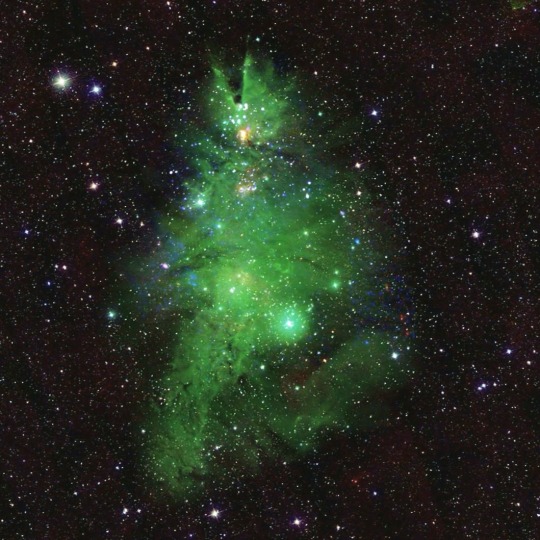
About 2,500 light-years from Earth, this community of young stars (less than 5 million years old - our middle-aged Sun has been burning for more than 5 billion years) give off X-rays that help light up the green nebula surrounding them, giving this cluster (NGC 2264) its nickname.
18 notes
·
View notes
Text

Púlsar de la Nebulosa del Cangrejo. Imágenes combinadas procedentes del Telescopio Espacial Hubble (en rojo) y del Observatorio de Rayos X Chandra (en azul).
#astronomy#space#pulsar#neutron star#crab nebula#supernova#crab pulsar#hubble#chandra#hubble space telescope#chandra x-ray observatory#astronomía#espacio#nebulosa del cangrejo#púlsar#telescopio espacial hubble#observatorio de rayos-x chandra#estrella de neutrones
9 notes
·
View notes
Photo

SNR 0519
The spectacular remains of a supernova called SNR 0519-69.0 (SNR 0519 for short) is the debris from an explosion of a white dwarf star.
SNR 0519 is located in the Large Magellanic Cloud, a small galaxy 160,000 light-years from Earth. This composite image shows X-ray data from NASA’s Chandra X-ray Observatory and optical data from NASA’s Hubble Space Telescope and the retired Spitzer Space Telescope.
#SNR 0519#Large Magellanic Cloud#galaxy#supernova#white dwarf star#nasa#space#chandra x-ray observatory#hubble space telescope#spitzer space telescope#beauty#beautiful#nature#science#astronomy
34 notes
·
View notes
Text
Record-Smashing Black Hole Born in Universe’s Infancy - Technology Org
New Post has been published on https://thedigitalinsider.com/record-smashing-black-hole-born-in-universes-infancy-technology-org/
Record-Smashing Black Hole Born in Universe’s Infancy - Technology Org
An international team of astrophysicists, including Princeton’s Andy Goulding has discovered the most distant supermassive black hole ever found, using two NASA space telescopes: the Chandra X-ray Observatory (Chandra) and the James Webb Space Telescope (JWST).
Astrophysicists combined data from JWST and the Chandra X-ray Observatory to identify the growing black hole at the center of this image. Image credit: X-ray: NASA/CXC/SAO/Ákos Bogdán et al.; Infrared: NASA/ESA/CSA/STScI; Image processing: NASA/CXC/SAO/L. Frattare, K. Arcand
The black hole, which is an estimated 10 to 100 million times more massive than our sun, is 13.2 billion light-years away in the galaxy UHZ-1, which means the telescopes are peering back in time to when the universe was “extremely young,” Goulding said — only about 450 million years old.
“This is one of the most dramatic discoveries to come out of the James Webb Space Telescope” and the discovery of the most distant growing supermassive black hole known, said Michael Strauss, professor and chair of astrophysical sciences at Princeton, who discussed the findings with the researchers but was not part of the research team. “Indeed, it completely smashes the old record.”
Precisely how the first black holes were formed in the universe’s infancy has been a long-standing debate among astronomers.
“Now, finally discovering a black hole that was so large, when the universe was so young, tells us that the black hole must have been very large when it was initially formed, probably from the direct collapse of a massive gas cloud,” said Goulding, who is a research scientist in Princeton’s Department of Astrophysical Sciences.
It also means that astronomers can rule out other formation models, like the death of the first massive stars, because those couldn’t produce a black hole large enough to explain UHZ-1, he added.
“The black hole has only a very short time to grow,” he said. “It either grew extraordinarily fast or the black hole was simply born larger.”
Goulding is one of the lead authors of the primary paper announcing the result and the lead author of a separate paper in The Astrophysical Journal Letters detailing the mass of the galaxy and its extraordinary distance, which was pivotal to the overall result.
Different telescopes have different tools to peer into the universe, and combining data from multiple instruments can yield more than a sum of their parts. “We needed Webb to find this remarkably distant galaxy and Chandra to find its supermassive black hole,” said Ákos Bogdán of the Center for Astrophysics-Harvard & Smithsonian in the press release. Bogdan is first author on the Nature Astronomy paper.
Written by Liz Fuller-Wright
Source: Princeton University
You can offer your link to a page which is relevant to the topic of this post.
#amp#Astronomy#Astronomy news#Astrophysics#billion#black hole#Black holes#Born#Chandra X-ray Observatory#Cloud#data#Discoveries#ESA#Featured Space news#Fundamental physics news#Galaxy#gas#how#indeed#international team#it#James Webb Space Telescope#jwst#Light#Link#mass#NASA#nature#One#Other
2 notes
·
View notes
Text
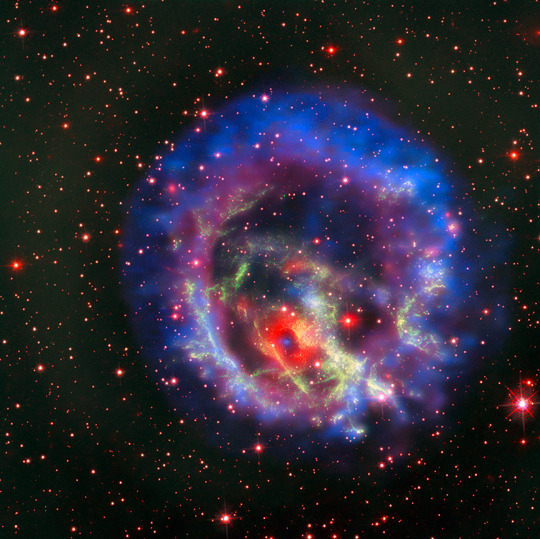
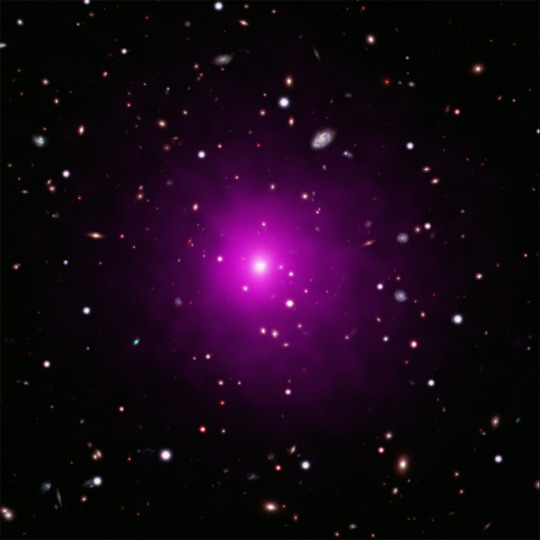
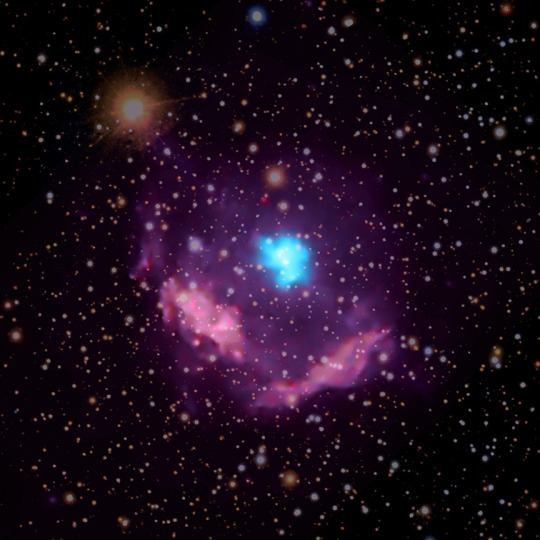
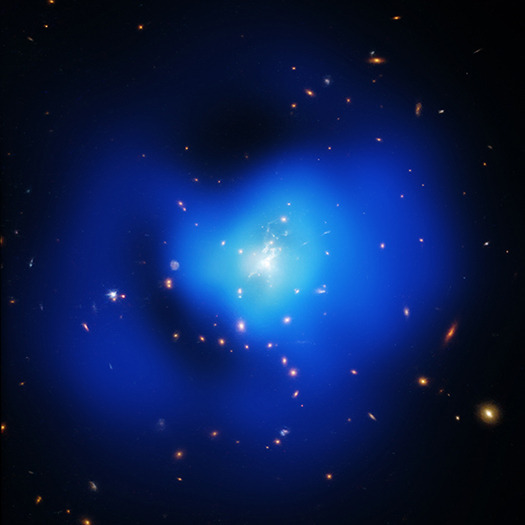
Chandra
#Chandra#Chandra X-Ray Observatory#NASA#telescope#space#cosmology#cosmos#universe#galaxy#supernova#space photography
5 notes
·
View notes
Link
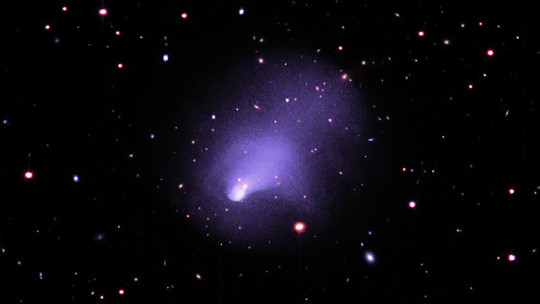
An article accepted for publication in the journal "The Monthly Notices of the Royal Astronomical Society" reports the results of the observations of Abell 2146, composed of two galaxy clusters in their merger phase. A team of researchers led by Helen Russell of the British University of Nottingham used NASA's Chandra X-ray Observatory to study the shock wave that formed along the collision between the two clusters and is about 1.6 million light-years long. The processes in place show similarities with others that occur on a much smaller scale such as those generated by the solar wind.
2 notes
·
View notes
Link
X-ray: (Chandra) NASA/CXC/U. Manitoba/C. Treyturik, (XMM-Newton) ESA/C. Treyturik; Optical: (Pan-STA...
0 notes
Text
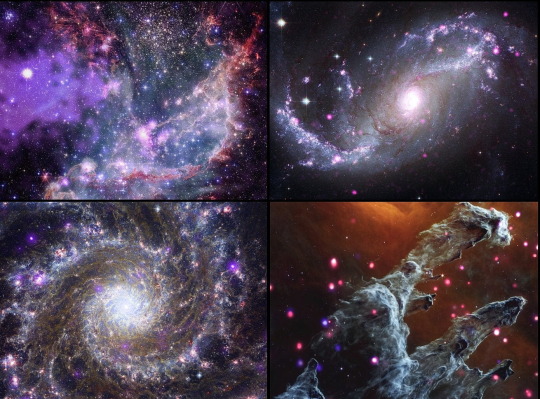
'New images that combine data from NASA’s Chandra X-ray Observatory and James Webb Space Telescope'
Release Date: 23 May '23.
'Chandra observes X-rays from cosmic objects, while Webb is sensitive to infrared light.'
1 note
·
View note
Text


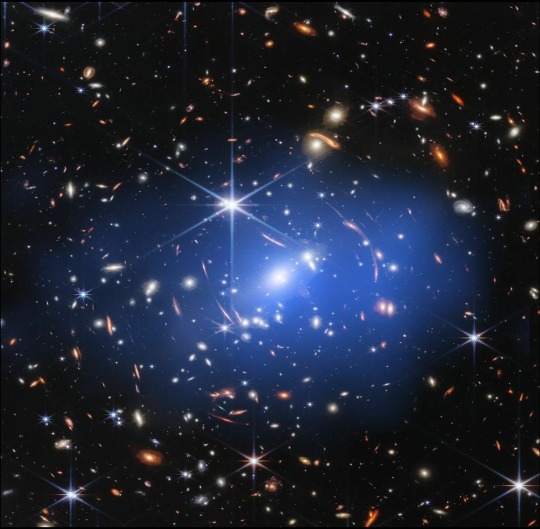
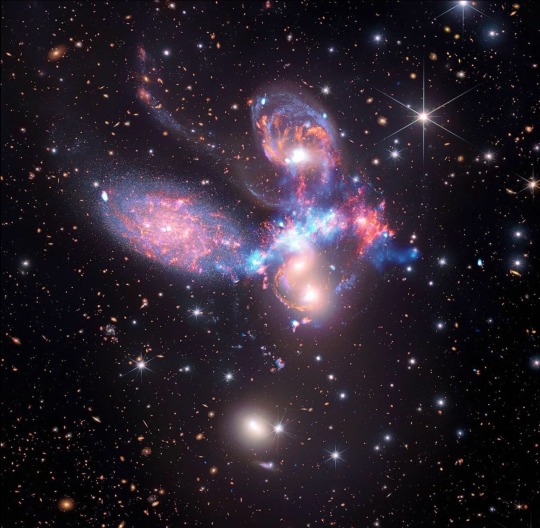
webb's infrared meets chandra's x-ray! technology is amazing <333
#nasa#jwst#james webb photos#james webb space technology#james webb update#james webb images#james webb telescope#chandra x ray observatory#space#outer space#galaxy#stars#sky#astronomy#stephan's quintet#cartwheel galaxy#deep field#carina nebula#aesthetic
960 notes
·
View notes
Photo
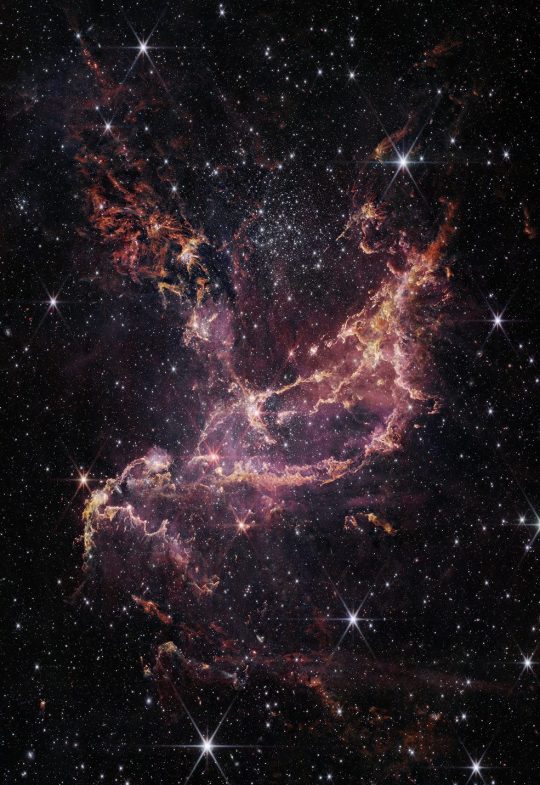
NGC 346, shown here in this image from NASA’s James Webb Space Telescope Near-Infrared Camera (NIRCam).
Image processing: A. Pagan (STScI), N. Habel (USRA), L. Lenkic (USRA) and L. Chu (NASA/Ames)
Photo : NASA, ESA, CSA, O. Jones (UK ATC), G. De Marchi (ESTEC), and M. Meixner (USRA)
#art#photography#space#cosmos#cosmic#universe#NGC 346#nasa#james webb space technology#esa#stars#blast#infrared#chandra x-ray observatory
19 notes
·
View notes
Text


Stephan's Quintet + Cartwheel Galaxy 🪐⊹ ࣪˖* ·
146 notes
·
View notes
Text
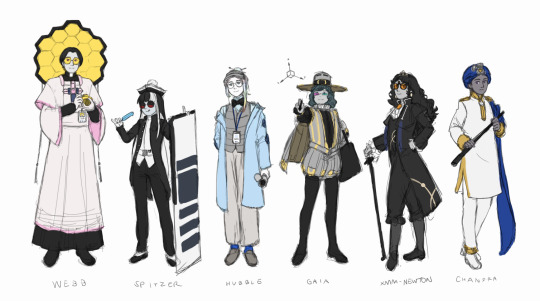
Telescopes 👀😶
#space#character design#gijinka#personification#nasa#esa#space telescope#oh boy time to tag everybody hang tight#jwst#james webb space telescope#spitzer space telescope#hubble#esa gaia#xmm-newton#chandra x ray observatory#religious imagery#priests#christian imagery#thanks webb#artists on tumblr
210 notes
·
View notes